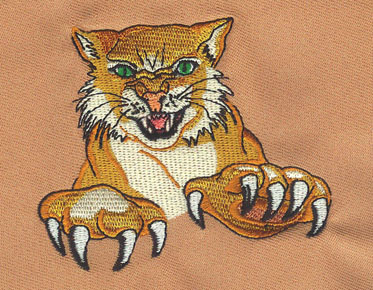The Role of Technology: Driving Innovation in Digitizing Services
In the world of embroidery, technology has
played a transformative role, revolutionizing the digitizing process. Digitizing services have greatly
benefited from technological advancements, allowing for more precise and
efficient translation of designs into machine-readable formats. In this
article, we will explore the pivotal role technology plays in digitizing
services, particularly in the field of logo digitization. We will also address
some frequently asked questions regarding digitizing services.
1. Cutting-Edge Software: Enhancing Precision and Detailing
Modern digitizing services harness the power of cutting-edge software to achieve unparalleled precision and detailing in logo digitization. Advanced software programs provide an array of tools and functionalities that enable digitizers to meticulously convert intricate designs into a format suitable for embroidery machines. These software solutions offer features such as stitch simulation, color mapping, and editing options, allowing digitizers to fine-tune every aspect of the pattern with ease.
2. Automated Algorithms: Streamlining the Digitizing Process
Technology has given rise to automated
algorithms that can analyze and process designs, significantly streamlining the
digitizing process. These algorithms can interpret complex patterns, identify
stitch types, and optimize the stitch path for efficient embroidery. By
automating certain aspects of embroidery digitization, such as stitch density calculation and underlay stitching,
technology reduces the time and effort required while maintaining the highest
level of accuracy and consistency.
3. Simulated Previews: Visualizing the Final Embroidered Outcome
Simulated previews are a valuable feature offered by digitizing software. They provide a visual representation of how the digitized design will appear when embroidered. By simulating the stitching process, including thread colors, stitch types, and layering, digitizers can assess and fine-tune the design before it is actually stitched. This feature allows for better visualization and ensures that the final embroidered outcome meets or exceeds the client's expectations.
4. File Compatibility: Adapting to Different Embroidery Machines
Technology has facilitated improved file compatibility between digitizing software and various embroidery machines. Digitizing services for embroidery can generate files in formats recognized by different machine manufacturers, such as DST, PES, EXP, and more. This compatibility ensures that digitized patterns can be seamlessly utilized across a wide range of embroidery machines, enabling embroiderers to work with their preferred equipment without compatibility issues.
Frequently Asked Questions (FAQ)
Q1: Can digitizing services accommodate
designs with complex gradients or shading?
A1: Yes, digitizing services can handle
designs with complex gradients or shading. Advanced software and expertise in
color mapping techniques allow for accurate translation of such designs into
embroidery-compatible formats.
Q2: How long does the digitizing process
usually take?
A2: The duration of the embroidery digitizing process varies depending on factors such as
design complexity and the workload of the digitizing service provider. Most
providers aim to deliver digitized designs within 24 to 48 hours, but it is
advisable to check with the specific provider for accurate turnaround times.
Q3: Can I request revisions or modifications
to the digitized pattern?
A3: Yes, most digitizing services offer revisions or modifications if required. They encourage open communication with clients to ensure that the digitized pattern meets their expectations. However, it is important to communicate specific changes and provide clear feedback to facilitate the revision process.
Technology has undoubtedly revolutionized online embroidery digitizing services,
enhancing precision, efficiency, and customization capabilities. With
cutting-edge software, automated algorithms, simulated previews, and improved
file compatibility, digitizing services can consistently deliver high-quality
digitized patterns that are ready for embroidery. By embracing technological
advancements, both digitizing service providers and embroiderers can unlock the
full potential of modern embroidery, bringing intricate and stunning designs to
life.



